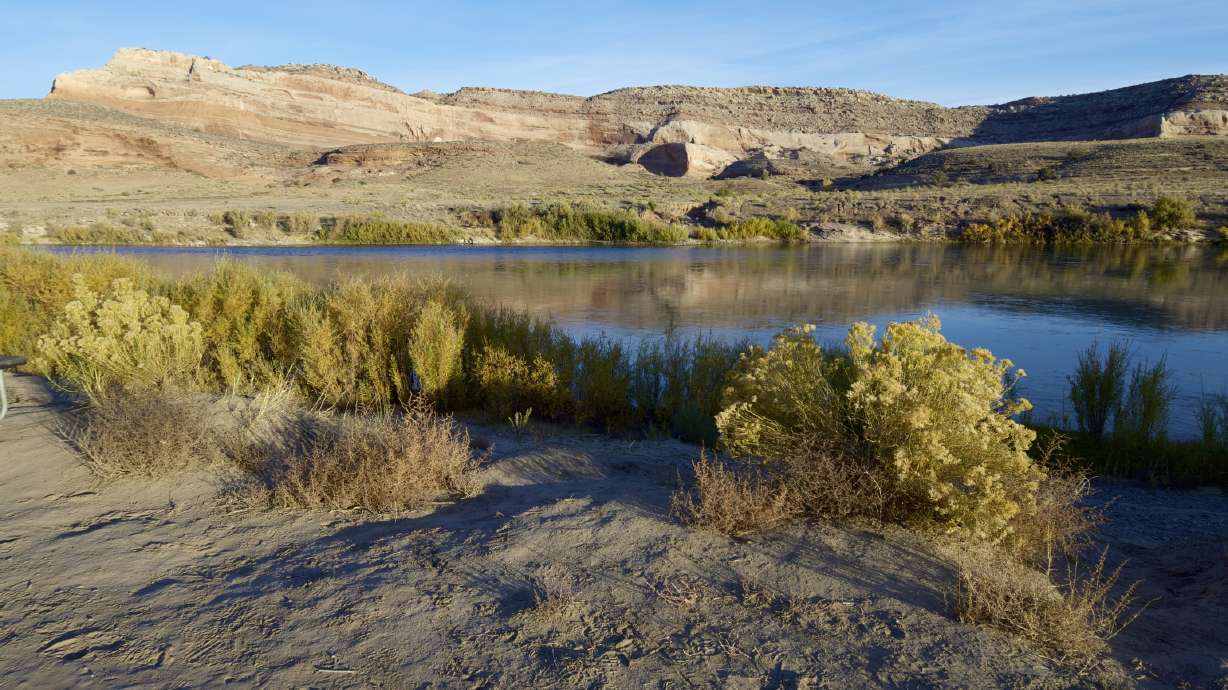Estimated read time: 3-4 minutes
This archived news story is available only for your personal, non-commercial use. Information in the story may be outdated or superseded by additional information. Reading or replaying the story in its archived form does not constitute a republication of the story.
SALT LAKE CITY — The annual spring runoff conference unfolding Wednesday at Utah State University comes during a Utah snowpack season in which runoff will be greatly diminished and drought dominates the conversation.
Anne Castle, a former assistant for water and science at the U.S. Department of Interior, is a featured speaker at the event, stressing that in water-challenged times like these, tough decisions will have to be made.
"This is where the rubber meets the road," she said. "It would be easy if we had enough water to meet all the needs, but we don't, particularly now when we are experiencing climate change impacts. We have historic drought in the Colorado River system, California is undergoing unprecedented drought, so this is where we need to come up with policies that will guide us in balancing all those needs."
Castle left her post in 2014, but before that she spearheaded the Interior department's WaterSmart program, which awards grants to boost conservation practices in the West, particularly in the agricultural sector.
Related:
She was also at the helm when the U.S. Bureau of Reclamation unveiled its unprecedented examination of the Colorado River system looking at supply and demand in the seven basin states over the next 50 years.
Castle said it is evident from the groundbreaking effort's analysis of demand and projected population growth in the Colorado River basin that there will be tough choices foisted on water users.
"I think it is clear that we need to figure out how to do more with less," she said. "We are looking at reduced supplies and lower lake levels in Lake Powell and Lake Mead. All of those things are part of our future. It is a complex process to figure out how we are going to deal with a reduced-water future, and there is absolutely no silver bullet that will solve all our problems."
Castle was lecturing Wednesday on policy challenges associated with managing environmental flows, which have been controversial in the California drought.
For two consecutive years, the State Water Resources Board relaxed environmental protections for fish to export more water from the Sacramento-San Joaquin River Delta for agricultural and municipal users.
I think it is clear that we need to figure out how to do more with less. We are looking at reduced supplies and lower lake levels in Lake Powell and Lake Mead. All of those things are part of our future. It is a complex process to figure out how we are going to deal with a reduced-water future, and there is absolutely no silver bullet that will solve all our problems.
–Anne Castle
While such action may satisfy immediate needs, there are long-term implications that risk the ire of federal enforcers of the Endangered Species Act and creation of conditions that may foster the perpetuation of more invasive non-native species. During Castle's watch at the U.S. Department of the Interior, three experimental high-flow releases were conducted at Glen Canyon Dam to help restore the environment at Grand Canyon National Park and Glen Canyon National Recreation Area.
The flows were designed to strike a delicate balance between distributing sediment to improve downstream environments while at the same time meeting water delivery obligation and hydropower generation.
In Utah, certain flows have to be maintained in the Colorado River drainage to help in the recovery of four endangered fish.
Hosted by the USU Water Initiative, the annual spring runoff conference brings together researchers, scientists and top experts in Utah and Intermountain West water issues.
This year's event included detailed examinations of the controversial "Waters of the U.S. Rule," put out by the U.S. Environmental Protection Agency and the Army Corps of Engineers, including its implications for arid regions of the West.









